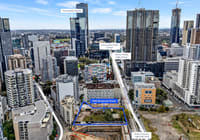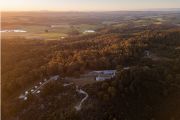
Farm land values to rise with surge in cattle, sheep prices
The value of farmland is expected to return to growth this year, thanks to better-than-expected rainfall, rising prices for sheep and cattle, and higher predicted incomes for farmers.
Government forecasters are betting on a 24 per cent rise in cattle prices and 16 per cent rise for sheep meat, which will bolster farm incomes, and property agents expect strong competition for $200 million in properties about to come on the market.
The forecasts are contrary to claims by the Greens and some farmers, before an inquiry into supermarket pricing, that the major retailers are pushing Australian farming to “crisis point”.

“Interest in farmland is still very good, which is very encouraging. Farmland is not getting any dearer, but it’s not getting any cheaper either,” said rural property sales veteran David Nolan of Webster Nolan.
He said farm prices had “firmed and stabilised” after land values bottomed mid-way through last year, which recorded the first decline in farm land values in a decade.
“The Bureau of Meteorology has a lot to answer for,” Mr Nolan said, after the agency declared an El Nino event in September ahead of what turned out to be a wet summer.
“Fire chiefs were warning of the worst drought in living memory and that pushed down livestock prices,” Mr Nolan said.
The average price per hectare of broad acre farmland fell 1.5 per cent last year to $9429, the first time values went backwards since 2011, when prices dropped 8 per cent to $3574, the latest agriculture department figures show.
Since then, values have surged because of strong prices for sheep and cattle, a wave of offshore investment in farm land and the rise in value of the agricultural sector, which has grown 40 per cent to a $90 billion industry in the last decade.
Australian Bureau of Agricultural and Resource Economics executive director Dr Jared Greenville said that while farmland prices were relatively flat in 2023, that had come after a decade of strong growth.
“Over the 10 years to 2023, broad acre farmland prices went from $4088 to $9429 per hectare, [an increase of 131 per cent],” Dr Greenville said.
The fall in average farmland prices follows other indexes reporting similar dips including the Australian Farmland Index, which over the 12 months to September 2023 found that prime productive farmland delivered just a 0.2 per cent total return, the weakest since 2015.
However, the outlook is brighter this year and the federal bureau forecasts a 6 per cent rise in agricultural production to $85 billion due to better seasonal conditions and as sale yard prices for livestock recover from sharp falls last year.
The agency forecasts the nominal average sale yard price for cattle to rise by 24 per cent to 599¢ per kilogram in 2024–25 as demand rises, and as fewer cattle are sent to abattoirs as producers restock the national herd. Similarly, sheep meat prices are expected to rise 16 per cent.
These higher commodity prices should also support strong competition and prices for livestock properties.
Wagga Wagga valuer Andrew Garnsey from Herron Todd White said a “degree of optimism” had returned to the rural market in southern NSW and northern Victoria.
The market has “transitioned from one of uncertainty to a more positive vibe given a turn in seasonal conditions and the anticipation that we are near, or at, the end of the current interest rate cycle”.
“Further interest rate increases seem less likely as inflation appears to be declining and as long as the season holds we do not foresee any significant changes to land values in the near future,” he said.
$200m worth of properties to hit the market
The federal agricultural department forecasts broad acre farm cash income to rise 47 per cent this financial year to $192,000.
Healthier farm balance sheets bode well for competition for prime assets.
These include Girrakool and North Pomeroy, a versatile 2393ha livestock property near Goulburn in the NSW Southern Tablelands being sold by former Argo Investments deputy chairman Rob Rich.
Price expectations are $28 million to $30 million for the highly productive property, which will go to auction on April 23.
“The owner is presenting a turnkey operation with the majority of capital expenditure now completed,” Mr Nolan said.
Girrakool and North Pomeroy is among around $200 million of blue-chip farms hitting the market heading into autumn that should provide a good indication of where prices are heading.
They include the 80,887ha Talbalba aggregation about 200km south-east of Cunnamulla, on the Qld-NSW border, which well-known sheep graziers Will and Hollie Grimwade are selling for $40 million through Col Medway and Simon Cudmore of LAWD. They are asking $40 million, or $200 per acre.

It’s not just broad acre farmers who are doing well. Providing debt finance to expanding farmers remains highly lucrative and Liberman family backed non-bank lender Merricks Capital delivered annual returns of 11 per cent to investors in its $340 million Agricultural Credit Fund last year.
Global fund manager PGIM expanded its agricultural financing platform into Australia in partnership with local debt provider Foundation Agri Finance.











